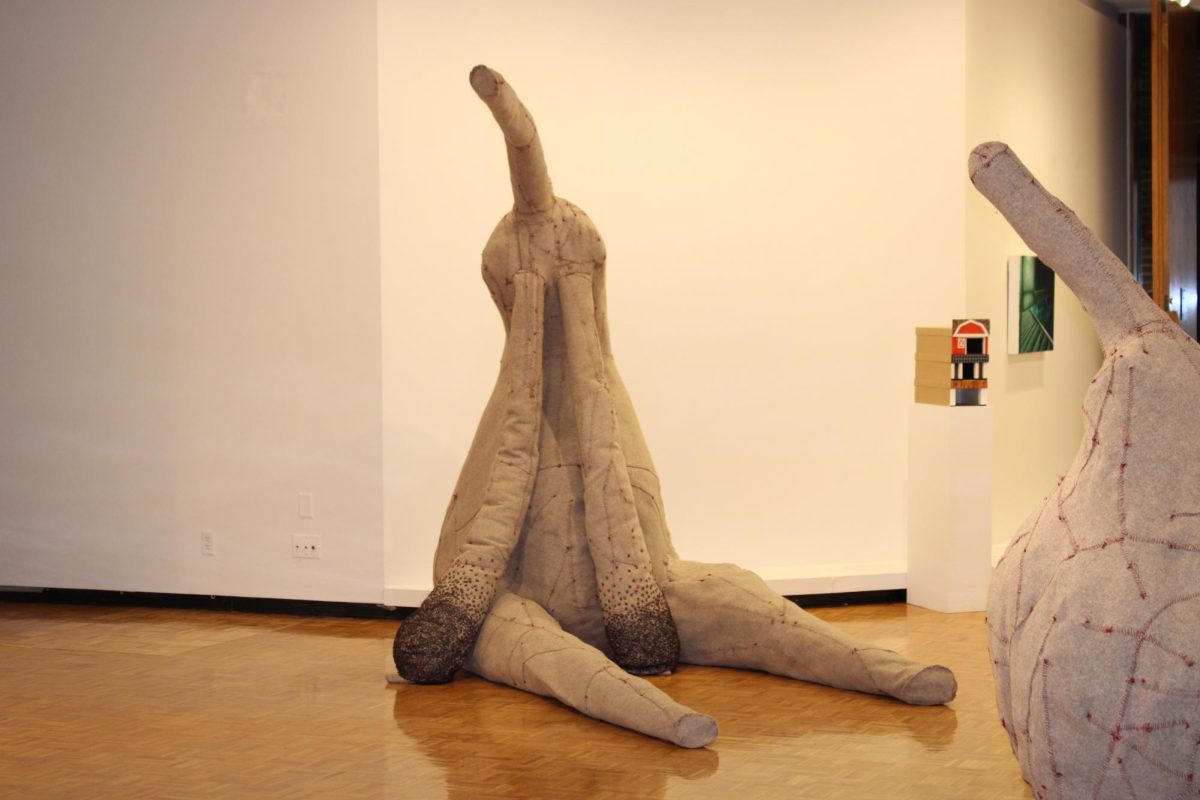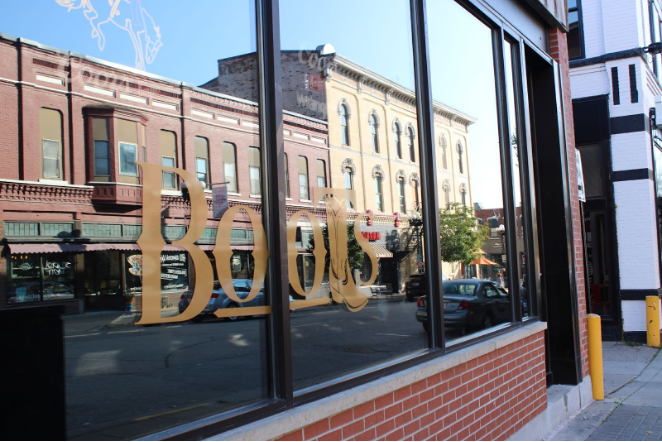The University of Wisconsin-La Crosse University Gallery in the Lowe Center for the Arts is currently hosting “Making and Retelling”, a joint exhibition featuring Nicole Havekost and Christ Rackley. According to Gallery Director and Lecturer Deborah-Eve Lombard, although the artists have different styles of artwork, they are both “makers” and “retellers”, or people who are “rewriting the stories they tell.”
In an artist talk on Friday, Feb. 9, both Rackley and Havekost highlighted their artistic journeys and previous work.
Rackley, a native of South Carolina, spoke about his childhood, growing up in a Georgia shopping mall where his father managed a shoe store. He drew heavily upon his childhood memories to create the exhibition currently showing in the University Gallery.
“My dad was a shoe salesman and a manager for a company…every time a new mall opened in the south, they would move my dad and have him open a new shoe store at that branch,” said Rackley.
He continued, “Usually when I tell people I grew up in a mall, they say something like, ‘Oh, you’re a mall rat.’ No, no, no. A mall rat spends a lot of time in the mall, but I spent all my time in the mall…My wife came up with the phrase ‘mall brat’.”
Rackley described his artwork as a way for him to look back at his childhood. “Since I am doing this work with my own memory, I’m sort of conducting an almost forensic study of my own past,” said Rackley. He continued by showing entries from an autobiography he had to write in fifth grade to relive some of his past.
Rackley also showed a picture of a mini living room he created in the corner of the stockroom of the shoe store. “I repurposed spaces that were supposed to be retail space into more mundane, everyday places.”
Most of Rackley’s artwork in this exhibition is scenic miniatures of the mall, different stores, and memories of his time spent there. One example is “Sales Floor”, where he used wood, paper, styrene, foam, fabric, inkjet prints, and paint to relive his memories of the shoe store.
In one of Rackley’s pieces, a video projection entitled “Catkid Mall”, he used green screens and video editing to make it look like shoes were floating or the escalators in the mall never stopped moving. He described the mall as never really changing.
The other attending artist, Nicole Havekost currently lives in Rochester, Minnesota, and had her works shown at the Minneapolis Institute of Art (MIA). Her part of the exhibition contains three large felt pieces, entitled “Trunk”, “Tether”, and “Sway”.
Havekost spoke about how she sees bodies as “things”, not so much as beautiful or perfect, but ever-changing and almost animal.
“It’s weird living in a body. I’m… trying to process what it feels like to be in this thing and how to manage the changes of this thing that we walk around in every day. I wanted [the sculptures] to be somewhat animal and somewhat human, not just one or the other,” said Havekost.
For her large pieces to be able to stand or sit on their own, Havekost first builds an interior skeleton with polyvinyl chloride (PVC) pipes, wood and concrete. She then fills it out with paper and tape and then drapes industrial size felt over the skeleton. Finally, she pins the felt over the paper, cuts the felt to match her design and then hand-stitches the felt with irregular seams and thousands of hook and eye fasteners.
Her sculptures are relatively large, although compared to Rackley’s miniature scenes, they appear enormous. Havekost’s tallest piece was fourteen feet tall and was on exhibition at MIA.
Havekost described one problem with the height of her artwork and the space in her studio. “I had always worked at home, but then I got a studio…the ceilings were only eight feet tall. A lot of the work I never saw together until it went up in the cities.”
“So I made it in two pieces. The legs and the hips were right to the top of the ceiling… They were like Tetris-ed laying the studio,” said Havekost.
When asked about why she chose felt for her sculptures, Havekost spoke about her time after art school. “I went to art school not really knowing that I was an artist. Then I went into apparel design because I liked fabric. But that really wasn’t my jam. The seeds were there for those materials and those things that I do now, it just wasn’t in the right place then,” said Havekost.
“Making and Retelling” will be on display until March 8 in the University Gallery, 100 Lowe Center for the Arts.





















